Updated Greco Roman Final
1/26
There's no tags or description
Looks like no tags are added yet.
Name | Mastery | Learn | Test | Matching | Spaced |
|---|
No study sessions yet.
27 Terms

Polyphemus Painter: The Death of Medusa and the Gorgons Pursuing Perseus, Greek, c. 650 BCE
-Child’s coffin
-Artist was one of the first to attempt to tell an entire tale at once
-largest, preserved Greek vase painting
-sirens, sphinx, and gorgons are all considered female characters
-gorgon is always shown as being scary and directed at the viewer in the Archaic and shown as beautiful in the Hellenistic

Delphi: Naxian Sphinx, Greek, c. 570-560 BCE
-earliest known composite creatures in Greek Art
-body of winged lion, human female head
-adopted from other cultures
-commonly seen in funerary scenes, marked the transition from living to dead

Siren Painter: Athenian stamnos, Greek, c. 480-470
-human headed birds, known for their voices which entice the death of men
-musical birds of Hades, home was the underworld and are the winged virgin daughters of Gaia and companions of Persephone
-often appear on funerary monuments, furthering their connection to the underworld
-first written about in Homer’s Odyssey

Wounded Chimaera from Arezzo, Etruscan, c. 400 BCE
-beast from mythology consisting of a lion, goat, and snake
-fire breathing monster, offspring of the Typhon and “viper” Echidna
-first appearance in the 7th century
-inscription in the right foreleg that reads “offered to the god Tin” (etruscan supreme god
-shown in typical pose but appears hungry and in a moment of suffering, curled in a pose of a scared/angry cat
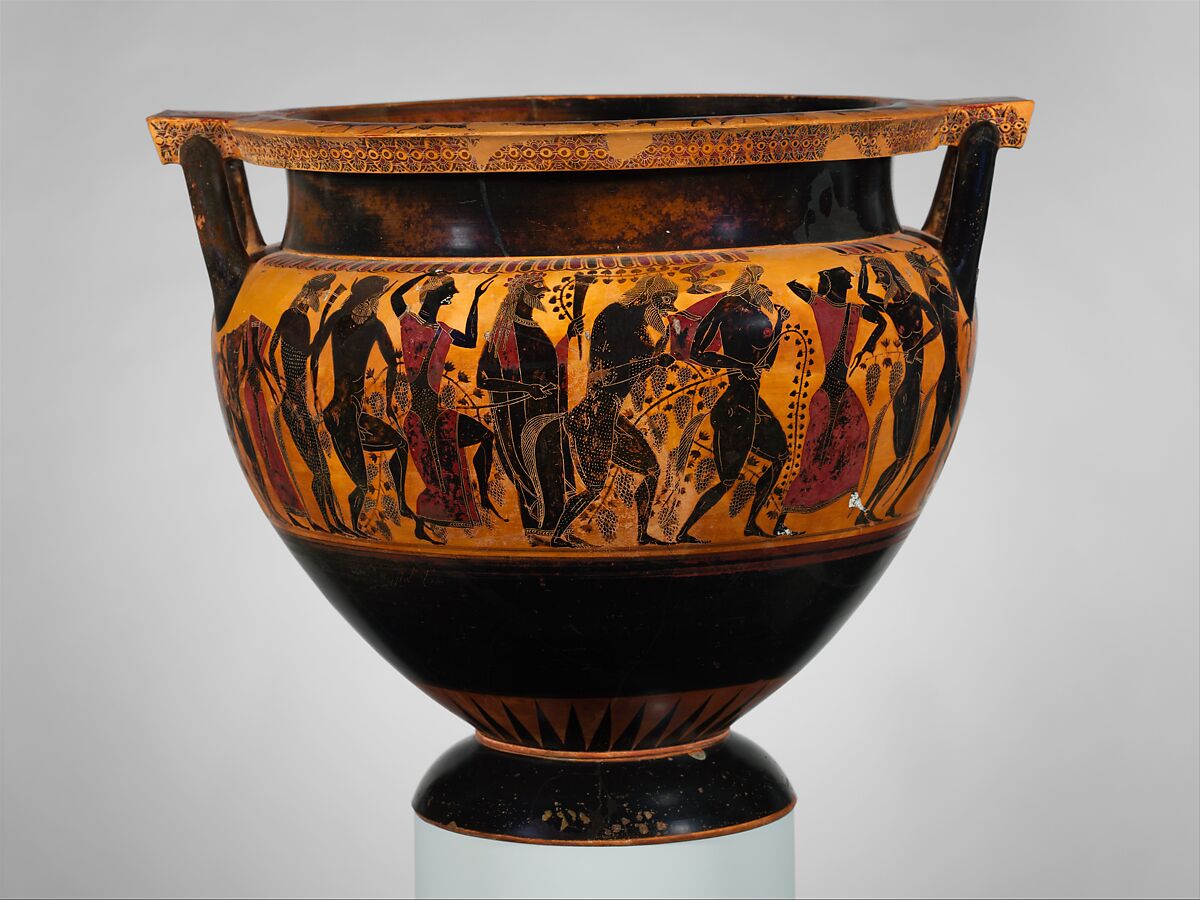
Lydos: Attic black-figure column-krater - Return of Hephaistos, Greek, c. 550-540 BCE
-Dionysos: offspring of an immortal & mortal union (Zeus and Semele), absent from art from the 7th century BCE
-male followers are satyrs, maenads are the female followers (nymphs)
-scene shows the divine status of Dionysus, despite mortal mother
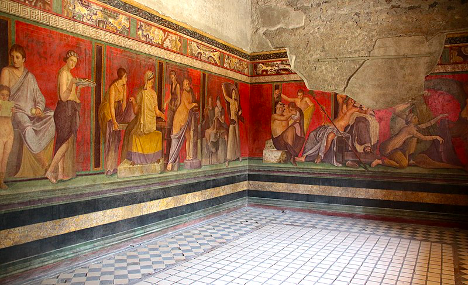
Pompeii Villa of the Mysteries: Mystery Room, Roman, c. 60-50 BCE
-Vegetation god with the rebirth and regeneration of natural world each year
-overlapping scenes, unsure if they are linear in progression or occurring at the same time
-possible transition of girlhood into matronhood scenes
-possible depiction of Dionysus because of wine business
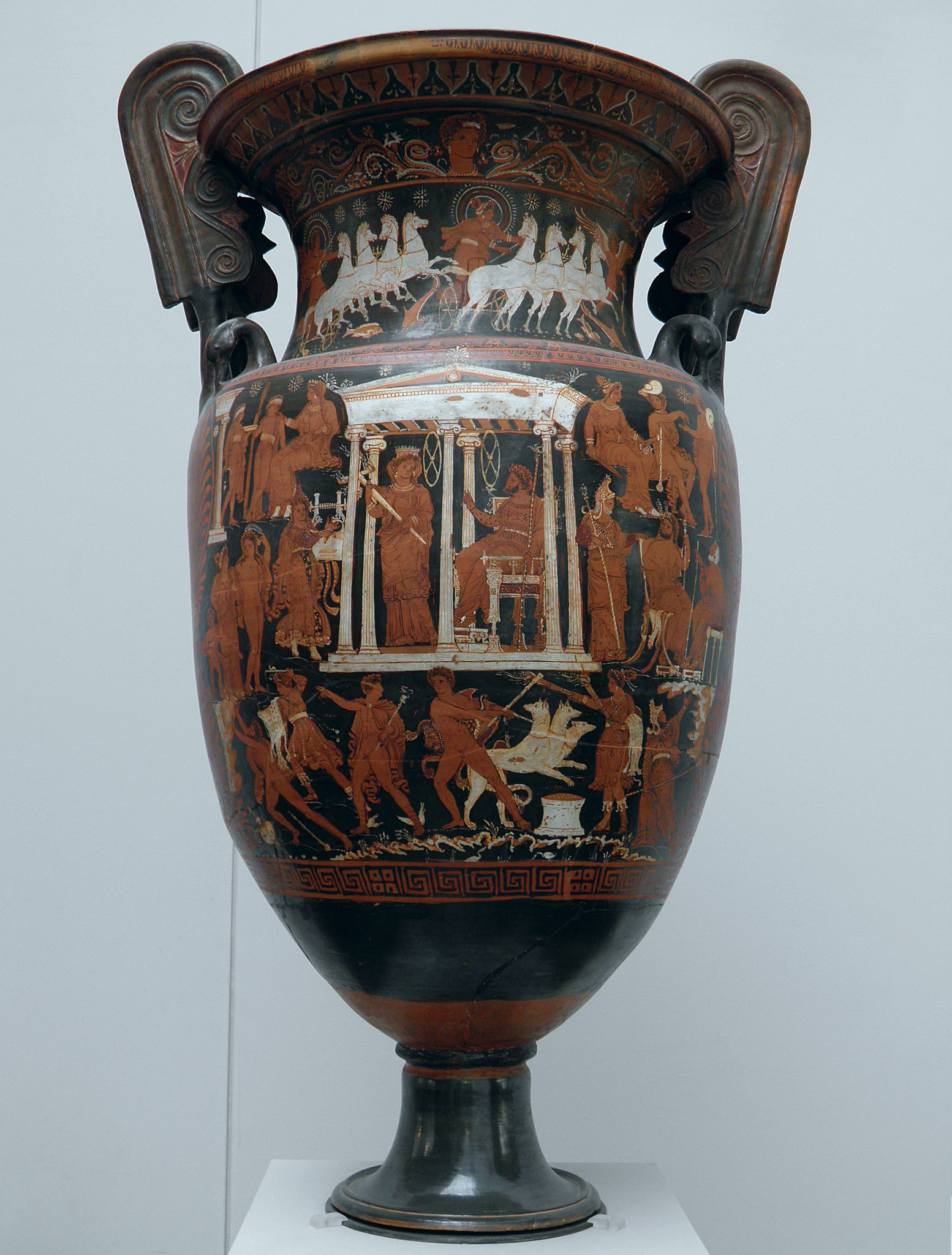
Underworld Painter: apulian red-figure volute-krater - Orpheus in the Underworld, Greek, c. 330-320 BCE
-famous mythical musician, either son of Apollo or the king of Thrace
-story revolves around his wife Euridice who dies shortly after their marriage to a snakebite, Orpheus travels to the underworld to convince the rulers (Hades and Persephone) to return her to the land of the living, he plays them a song on his lyre and they grant him his wish on the condition that he not look back to Euridice who will follow him out of the underworld, he fails this in the last moment which causes Euridice to be returned to the underworld forever
-many other underworld inhabitants make up the composition of the vase, Euridice is however absent from the scene
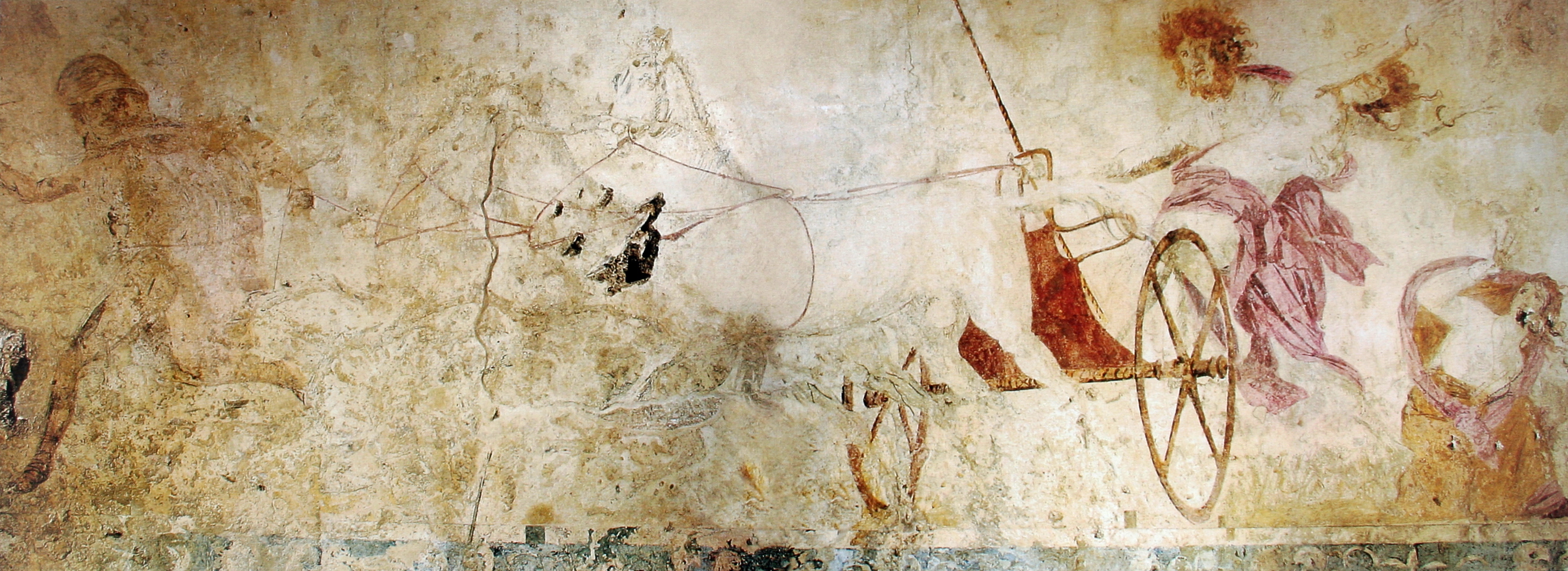
Vergina: Tomb of Persephone - Rape of Persephone, Greek, c. 340 BCE
-abduction scene of Persephone by Hades, permission granted to Hades by his brother Zeus
-back story of the agreement that was made between Hades and Persephone allowing for her to return to the surface for 6 months a year due to the reaction of Demeter for the abduction of her daughter (famine happened, human race begins dying off, Zeus intervened)
-three fates??
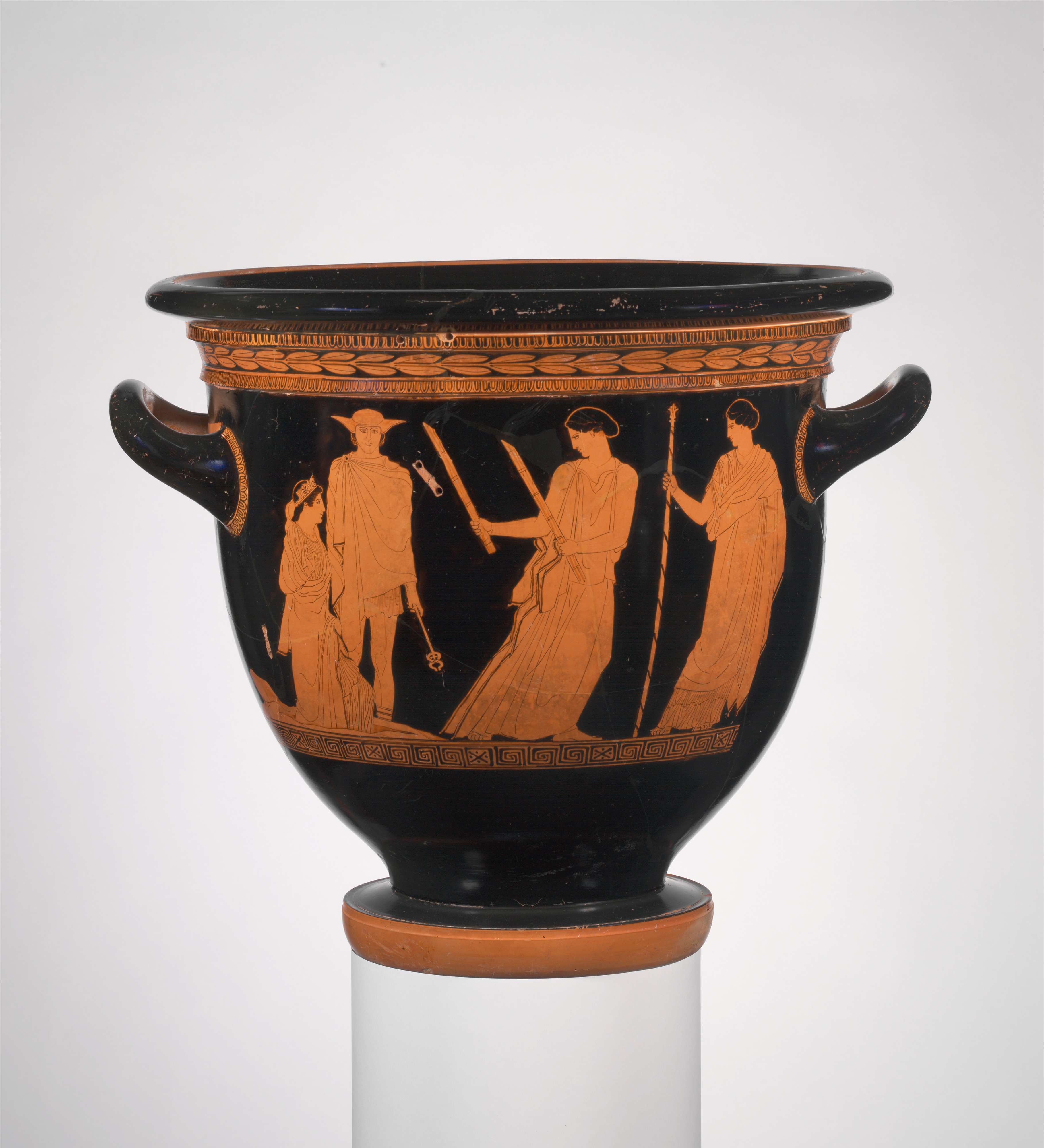
Persephone Painter: Attic red-figure bell-krater, Persephone returning from the Underworld, Greek, c. 440 BCE
-Return of Persephone to her mother at Eleusis, allowed for the growth of crops once again
-Persephone ascends from the underworld guided by Hermes and Hekate
-Persephone wears bridal adornments and the scene reflects wedding procession
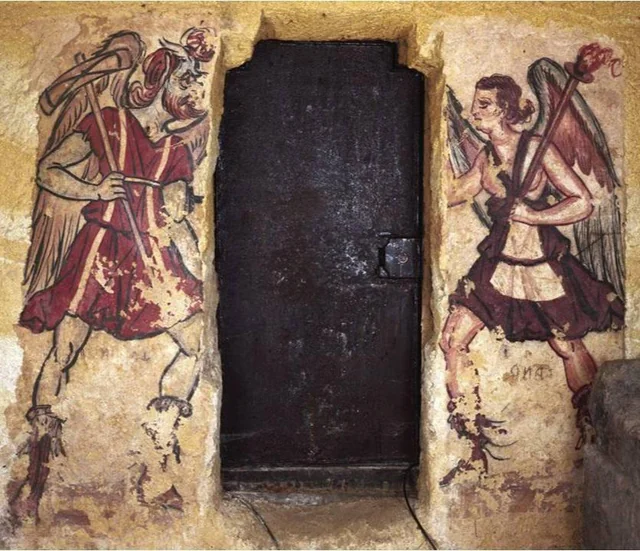
Tarquinia: Tomb of the Anina - Charun and Vanth, Etruscan, c. 275-250 BCE
-Demons: Etruscan underworld, appear after 400 BCE, derive from Charon (ferryman of the dead)
-flanking the false door should be understood as an entrance to the underworld
-signify a belief in life after death
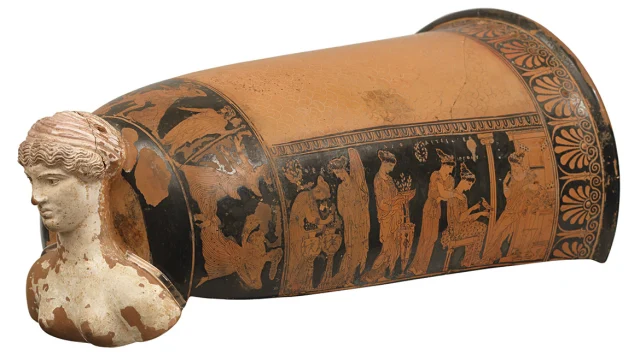
Eretria Painter: Attic red-figure epinetron - Adornment of Harmonia/Abduction/Thetis/Epaulia of Alkestis, Greek, c. 425 BCE
-three painted sides show scenes from three celebrated weddings in Greek literature (Harmonia, Thetis, Alkestis)
-adornment of Harmonia, marriage of Thetis (as an abduction), Alkestis after her wedding recieving gifts
-epinetron was used by women in the production of spun thread, placed over the thigh, specific function is unknown as it was rarely depicted beyond basic image on vases
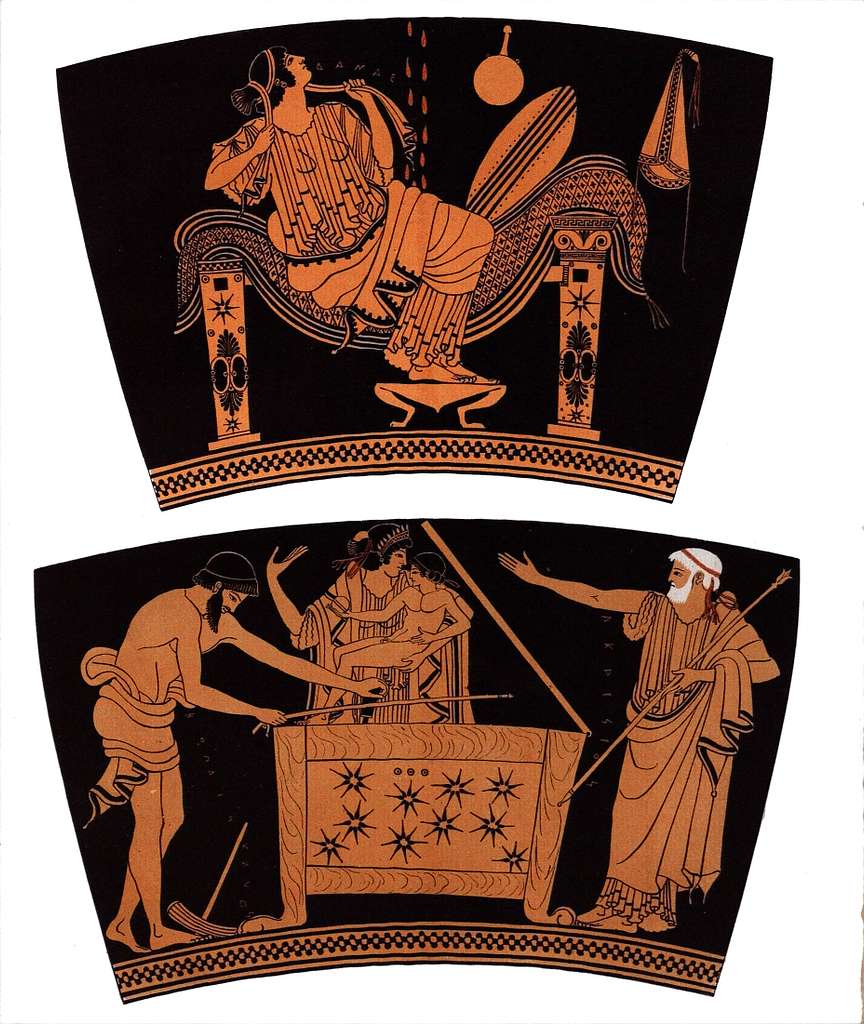
Triptolemos Painter: Attic red-figure calyx-krater - Danae and the golden shower/Danae and Perseus in the chest, Greek, c. 490-480 BCE
-heroines are usually young women who have reached puberty or are ready to become wives/mothers
-sealed in a chamber by her father, impregnated by Zeus through golden shower, father sends her and the baby (Perseus) out to sea on a wooden box
-Virginity
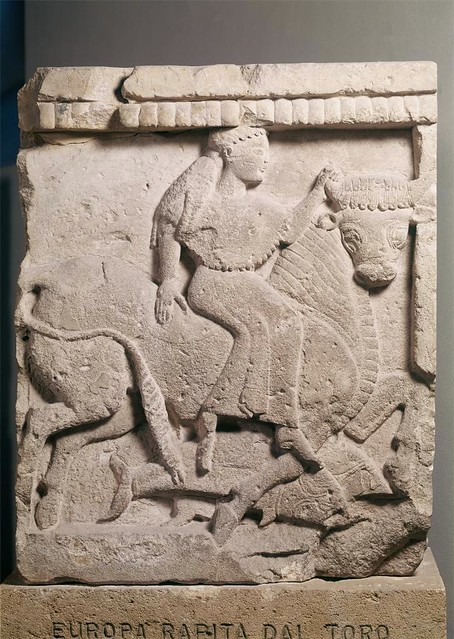
Selinunte, Temple Y: Europa and the Bull Metope, Greek, c. 575 BCE
-Zeus and Europa, story of Europa and the Bull
-believed to have belonged to a small temple

Penelope Painter: Attic red-figure skyphos - Telemachos’ departure from Penelope, Greek, c. 440 BCE
-Penelope and Odysseus, ultimate story of marriage fidelity (only on Penelope’s part)
-Textile production and association with women
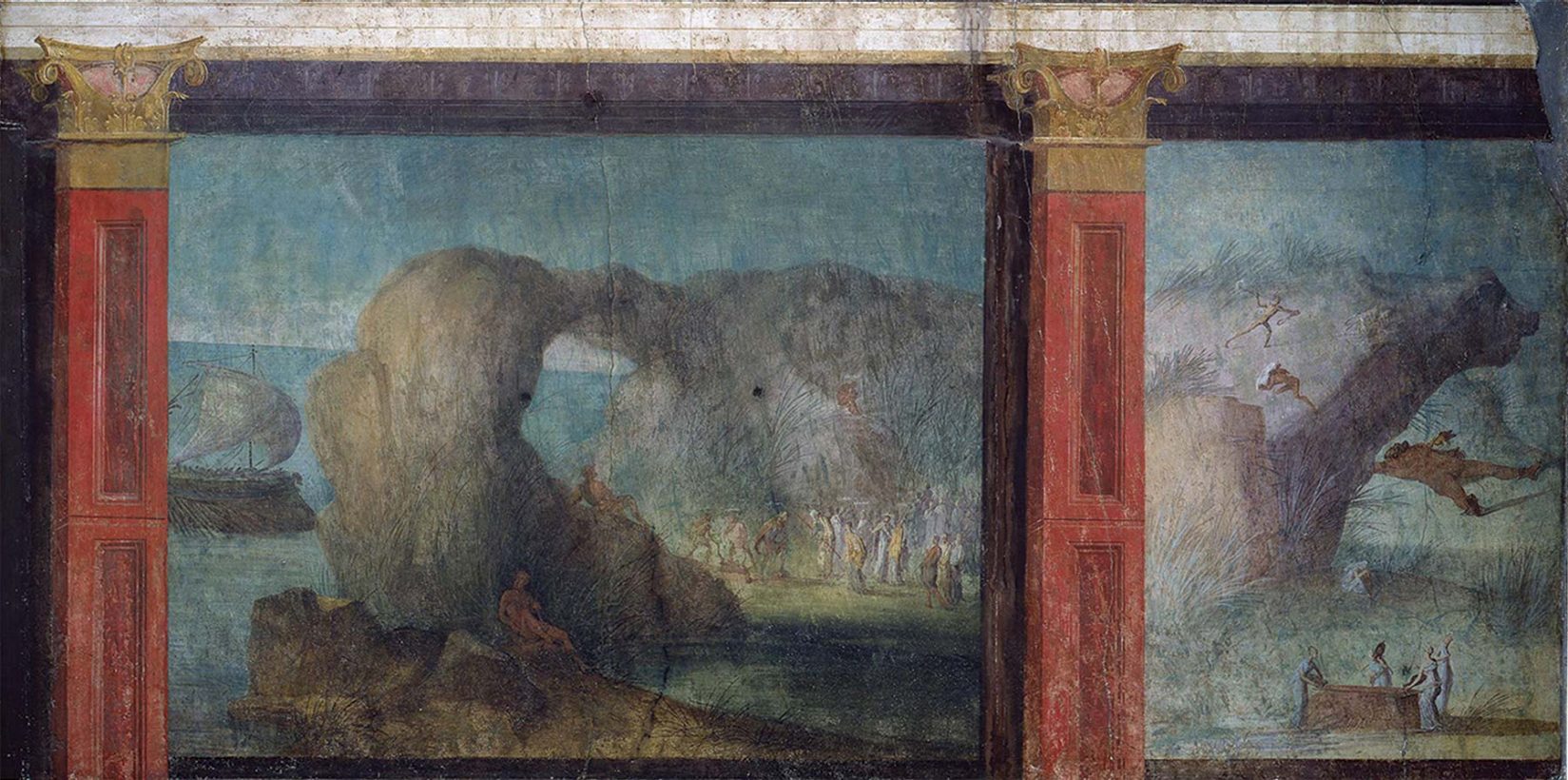
Rome: The Odyssey Frieze, Roman, c. 50-40 BCE
-Land of the Laestygonians
-Visit to the Underworld
-House of Circe

Sperlonga: The Blinding of Polyphemus, Roman, 2nd century BCE-1st century CE
-story from the Odyssey
-Odysseus and crew vs the giants, trapped in cave, blinds the giant and hides under the sheep to escape the cave

Painter of London B 76: Attic black-figure hydria - Ambush of Troilos, Greek, c. 560-550
-Achilles executing Troilos to advance the war and take Troy, which an oracle said could not be done without the death of Troilos
-Achilles lay waiting at a fountain and when Troilos comes by he begins chasing after him
-Popular in visual depiction, not in literary
-introduction of Polyxena and her connection to Achilles, having her killed and buried with him after he has died because he grew to be obsessed with her
Leagros Group: Attic black-figure hydria - Achilles dragging Hector’s body around the tomb of Patroklos, Greek, c. 510 BCE
-death of Patroklos (lover and cousin of Achilles), killed by Hector
-Achilles revenge for what Hector had done to Patroklos
-Comes to his senses after dragging the body around for several days and ends his torture for the family of Hector
-appearance of Iris, the god’s messenger

Delphi, Siphnian Treasury: East Frieze - Battle for the Body of Antilochos/Gods in Council on Mount Olympus, Greek, c. 525 BCE
-divided into two halves depicting simultaneous action on the battlefield (Achilles and Memnon fighting), other side is the gods determining the outcome off this battle
-outside force makes the ultimate decision of the outcome of the battle as Zeus does not want to divide the gods
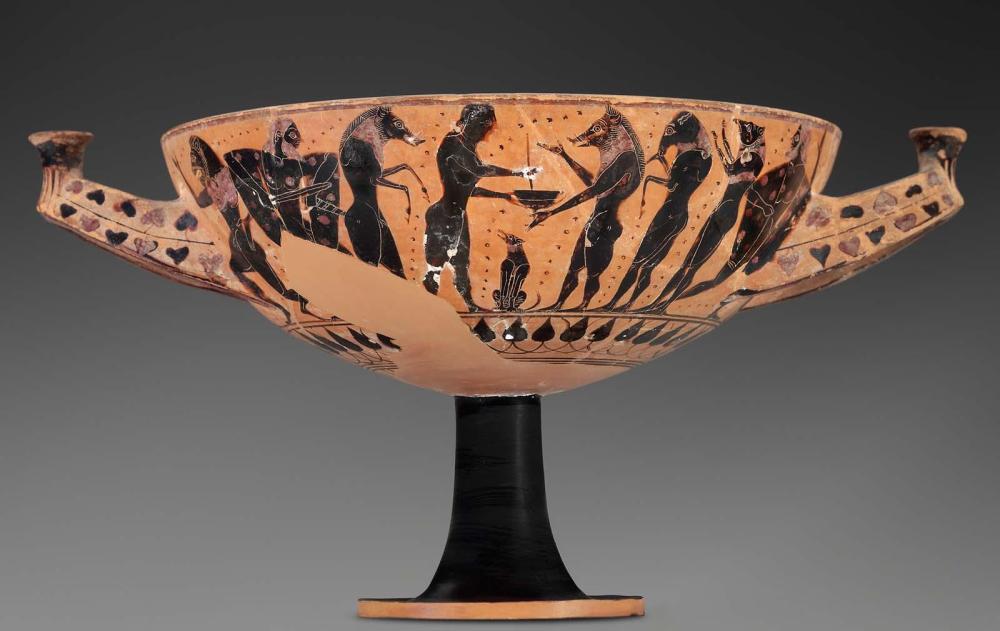
Painter of the Boston Polyphemus: Attic black-figure kylix - Circe enchanting the companions of Odysseus, Greek, c. 560-550 BCE
-Circe’s island in the story of the Odyssey
-Turns all of Odysseus’ men into pigs by giving the men a potion as she has done with the other animals that exist on her island that are all men transformed into various animals
-Odysseus becomes Circe’s lover for a year to free his men after successfully using an herb to counteract the effects of the potion
-Circe is seen in the nude representing her divine seductive ability
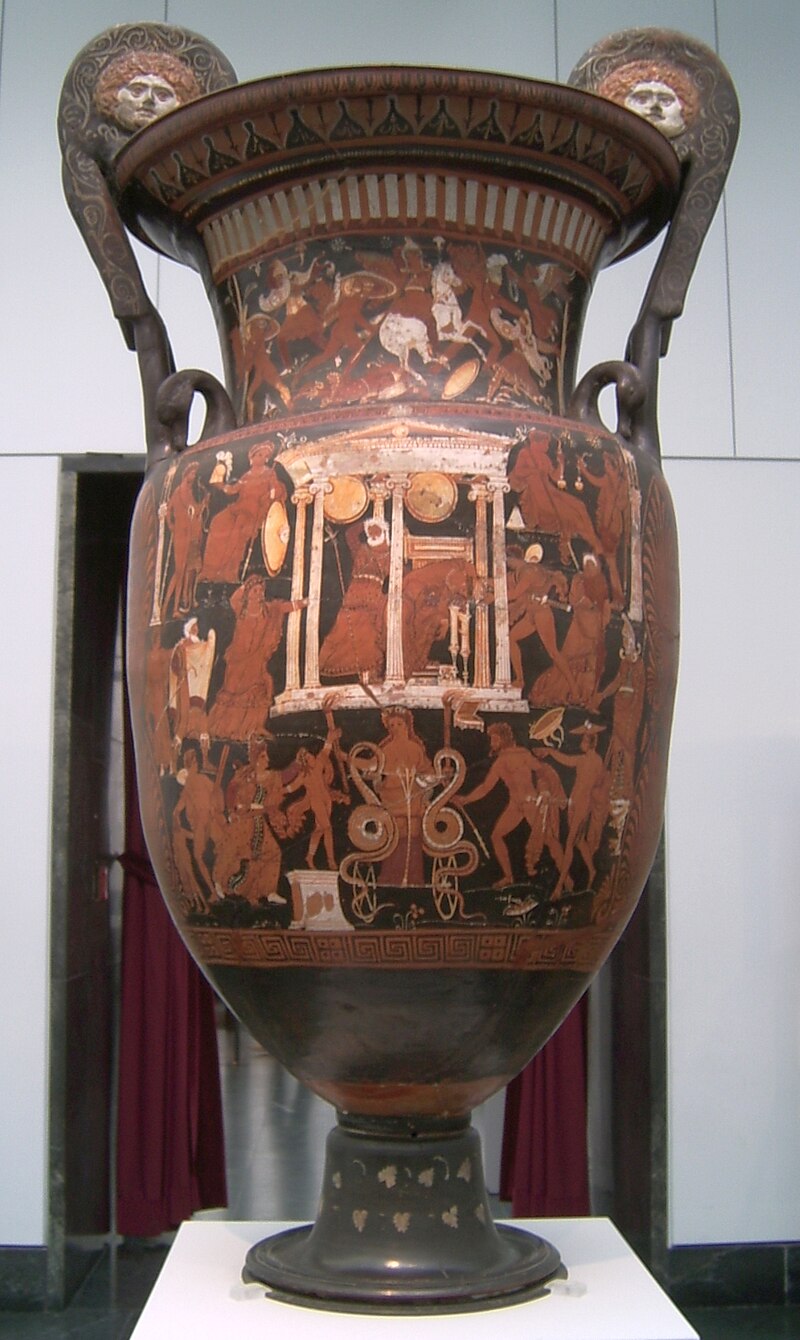
Underworld Painter: Apulian red-volute krater, Medea’s adventures in Corinth, Greek, c. 320 BCE
-Golden Fleece
-Medea aides Jason in the stealing of the Golden Fleece (which his uncle Pelias wants)
-Medea is devoted to Jason after Aphrodite helped him charm her
-Medea tricks Pelias’ daughters into killing him after he refused to award Jason
-Medea later kills her own children that she has with Jason after he fell in love with another woman, which is what is happening in the scene on the vase
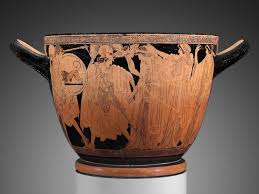
Makron: Attic red-figure skyphos - Abduction of Helen/Menelaos’ recovery of Helen, Greek, c. 480 BCE
-Helen succumbs to Aphrodite to protect herself from being manipulated by her
-Menelaos recovering his wife at the end of the Trojan war
-Menelaos finds Helen and goes to kill her only to be stopped by Aphrodite and he falls in love with Helen’s beauty

Phiale Painter: Attic red-figure lekythos - Poseidon pursuing Amymone, Greek, c. 440 BCE
-Poseidon chasing Amymone, Amymone appears to be running away but her body language and positioning of the vase suggests her willingness to Poseidon

The Ludovisi Throne, Greek, c. 460 BCE
-Aphrodite, possibly being born from the sea, born from the sea foam which was the semen from the castrated phallus of Ouranos (father of Kronos)
-Figures on either side represent the different women who worshipped Aphrodite (vulgar and modest)
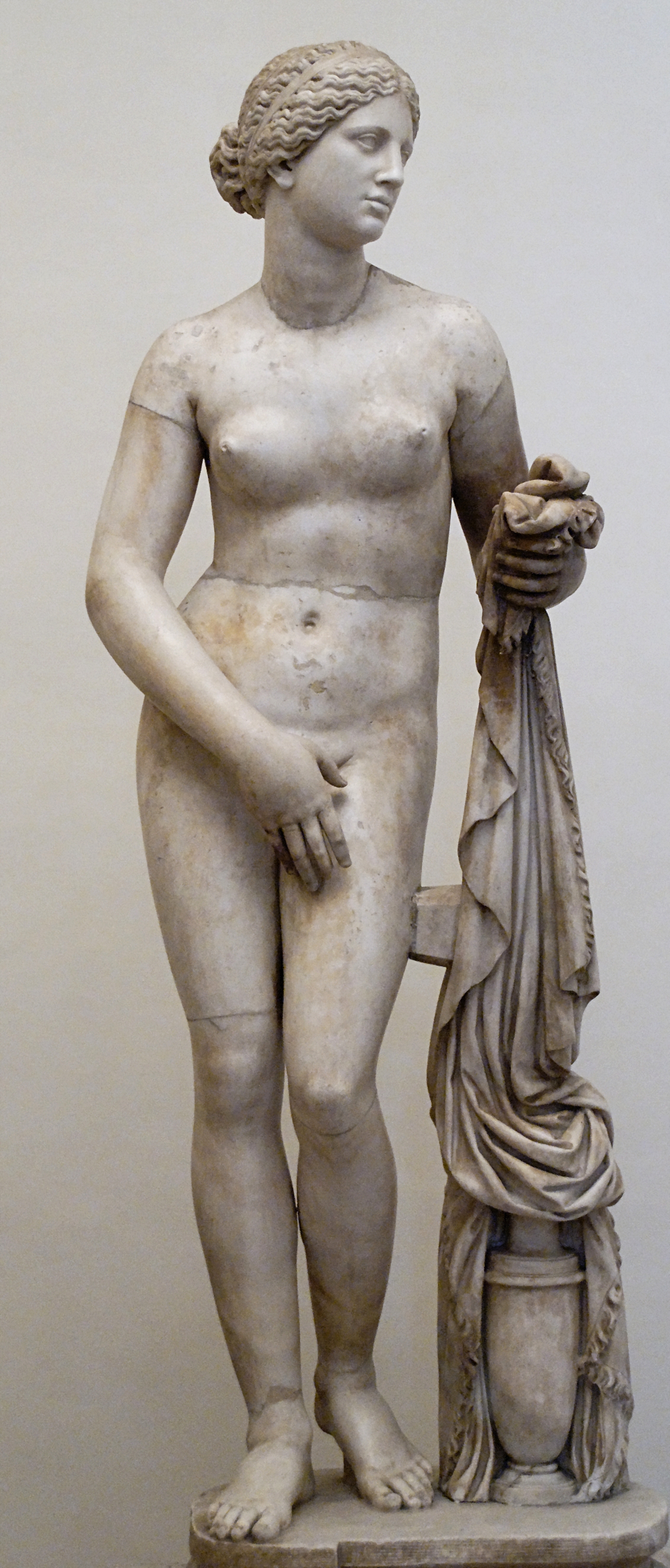
Praxiteles: Aphrodite of Knidos, Greek, c. 350 BCE
-stood in a round open structure alone, men would sneak in at night to have their way with her (stains were left on her)
-Aphrodite appears to have been suddenly caught while she was bathing as she is posed in a way that attempts to cover herself
-full nudity in women was very uncommon unless in the representations of sex workers or assault scenes
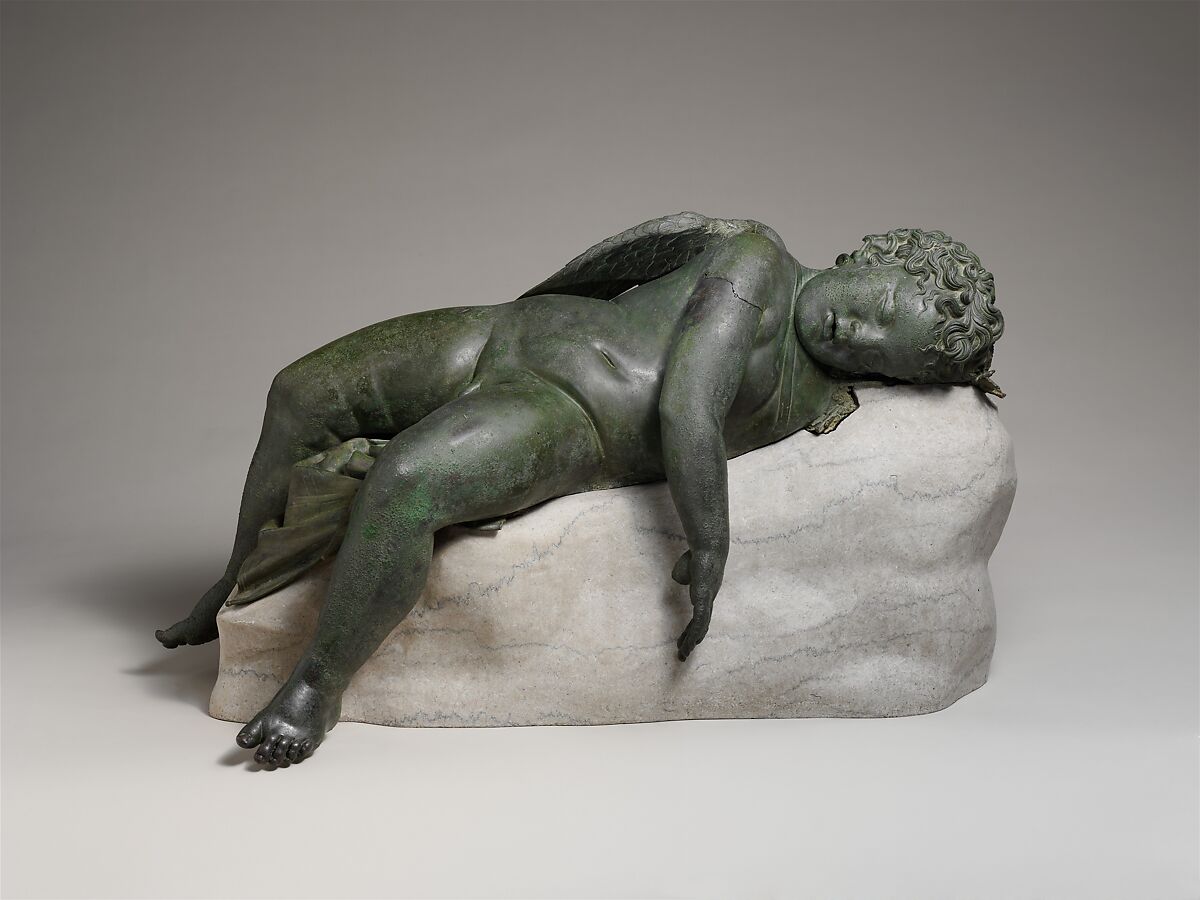
Bronze Statue of Sleeping Eros, Greek, 3rd-2nd century BCE
-Associated with Aphrodite
-missing pieces of the statue (bow and quiver)
-God of love, courtship, marriage, sexuality
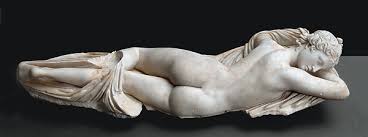
Sleeping Hermaphrodite, Greek, c. 200-150 BCE
-mythical ideal in which both sexes have been combined
-bisexuality of the greeks (most men were bisexual)
-hermaphrodites were not seen as others in ancient Greece but were rather seen as important